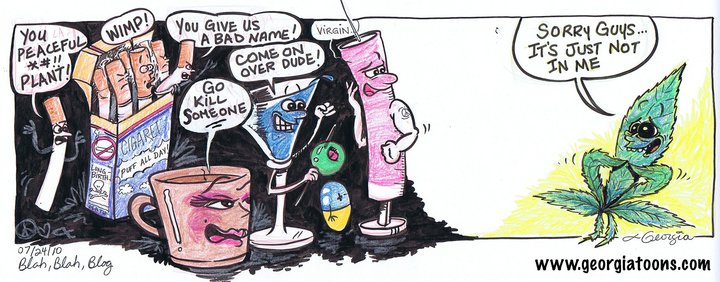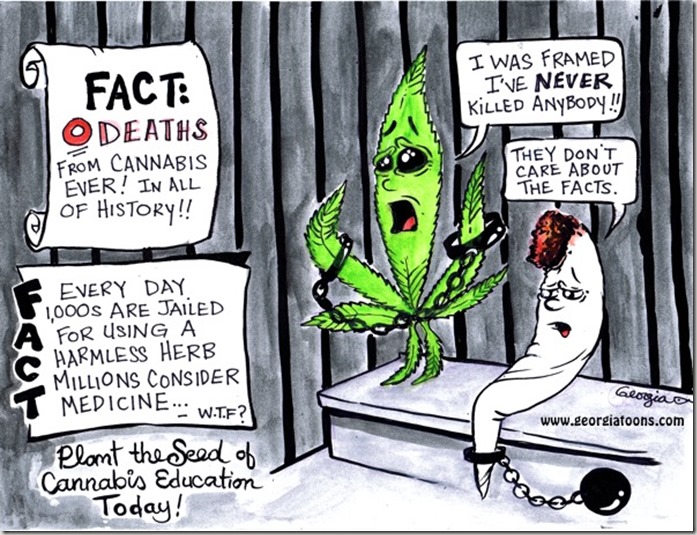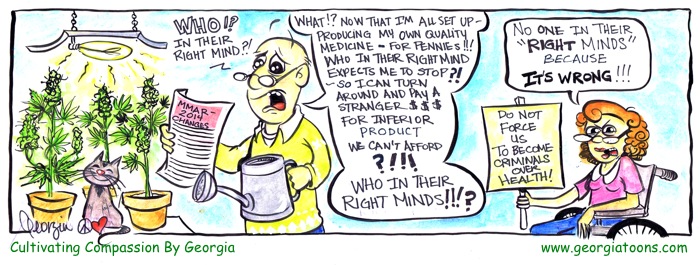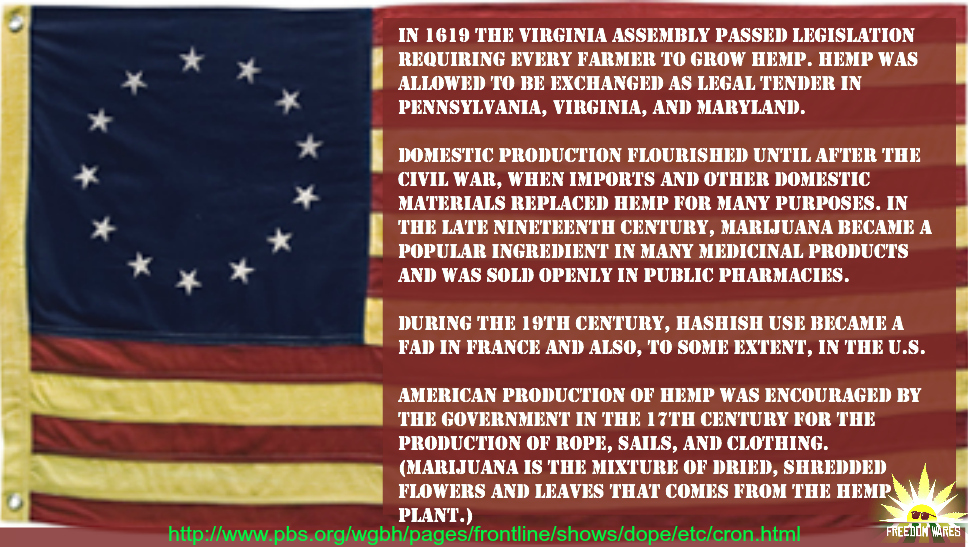When it comes to cancers, pretty much all of us have been affected in one way or another. If you haven’t, you likely soon will be.
“…Each year globally, about 14 million people learn they have cancer and 8 million people die from the disease.”
“A Global Concern”
“Today, more than twice as many people die from cancer than from AIDS, malaria, and tuberculosis combined. The World Health Organization (WHO) projects that without immediate action, the global number of deaths from cancer will increase by nearly 80% by 2030, with most occurring in low- and middle-income countries.
Research suggests that one-third of cancer deaths can be prevented. Although proven ways to prevent cancer exist, these services and technologies are not widely available in low- and middle-income countries.”
~Centers for Disease Control and Prevention
 I see more than just “anecdotal” evidence all over the world is proving the effectiveness of cannabinoids in treating pretty much all diseases and disorders, especially including cancers and epilepsy.
I see more than just “anecdotal” evidence all over the world is proving the effectiveness of cannabinoids in treating pretty much all diseases and disorders, especially including cancers and epilepsy.
The full usage of the cannabis plant should really be mandatory by governments all over the world. These government$ instead are suppressing the truth and the humans whom share it…
…the prohibition of this plant, it’s misinformation and generated negative stigma towards use has incarcerated humans, executed humans, grieved and traumatized families as well as jeopardized the health and welfare of the Human Race and the future of our planet.
The longest running war in history is the ” War On Drugs”. It is a true killer too…don’t kid yourselves.
The FDA runs from the cure, even more humans die as a result.
The American Government knew in 74′ that cannabis could kill cancer. The story below was the most censored in 2000. Totally worth repeating…
 Pot Shrinks Tumors;
Pot Shrinks Tumors;
Government Knew in ’74
By Raymond Cushing, AlterNet
Raymond Cushing is a journalist, musician and filmmaker. This article
was named by Project Censored as a ” Top Censored Story of 2000. ”
http://www.alternet.org/
The term medical marijuana took on dramatic new meaning in February, 2000 when researchers in Madrid announced they had destroyed incurable brain tumors in rats by injecting them with THC, the active ingredient in cannabis.
The Madrid study marks only the second time that THC has been administered to tumor-bearing animals; the first was a Virginia investigation 26 years ago. In both studies, the THC shrank or destroyed tumors in a majority of the test subjects.
Most Americans don’t know anything about the Madrid discovery. Virtually no major U.S. newspapers carried the story, which ran only once on the AP and UPI news wires, on Feb. 29, 2000.
The ominous part is that this isn’t the first time scientists have discovered that THC shrinks tumors. In 1974 researchers at the Medical College of Virginia, who had been funded by the National Institute of Health to find evidence that marijuana damages the immune system, found instead that THC slowed the growth of three kinds of cancer in mice – lung and breast cancer, and a virus-induced leukemia.
The DEA quickly shut down the Virginia study and all further cannabis/tumor research, according to Jack Herer, who reports on the events in his book, “The Emperor Wears No Clothes.” In 1976 President Gerald Ford put an end to all public cannabis research and granted exclusive research rights to major pharmaceutical companies, who set out – unsuccessfully – to develop synthetic forms of THC that would deliver all the medical benefits without the “high.”
The Madrid researchers reported in the March issue of “Nature Medicine” that they injected the brains of 45 rats with cancer cells, producing tumors whose presence they confirmed through magnetic resonance imaging (MRI). On the 12th day they injected 15 of the rats with THC and 15 with Win-55,212-2 a synthetic compound similar to THC. “All the rats left untreated uniformly died 12-18 days after glioma (brain cancer) cell inoculation … Cannabinoid (THC)-treated rats survived significantly longer than control rats. THC administration was ineffective in three rats, which died by days 16-18. Nine of the THC-treated rats surpassed the time of death of untreated rats, and survived up to 19-35 days. Moreover, the tumor was completely eradicated in three of the treated rats.” The rats treated with Win-55,212-2 showed similar results.
The Spanish researchers, led by Dr. Manuel Guzman of Complutense University, also irrigated healthy rats’ brains with large doses of THC for seven days, to test for harmful biochemical or neurological effects. They found none.
“Careful MRI analysis of all those tumor-free rats showed no sign of damage related to necrosis, edema, infection or trauma … We also examined other potential side effects of cannabinoid administration. In both tumor-free and tumor-bearing rats, cannabinoid administration induced no substantial change in behavioral parameters such as motor coordination or physical activity. Food and water intake as well as body weight gain were unaffected during and after cannabinoid delivery. Likewise, the general hematological profiles of cannabinoid-treated rats were normal. Thus, neither biochemical parameters nor markers of tissue damage changed substantially during the 7-day delivery period or for at least 2 months after cannabinoid treatment ended.”
Guzman’s investigation is the only time since the 1974 Virginia study that THC has been administered to live tumor-bearing animals. (The Spanish researchers cite a 1998 study in which cannabinoids inhibited breast cancer cell proliferation, but that was a “petri dish” experiment that didn’t involve live subjects.)
In an email interview for this story, the Madrid researcher said he had heard of the Virginia study, but had never been able to locate literature on it. Hence, the Nature Medicine article characterizes the new study as the first on tumor-laden animals and doesn’t cite the 1974 Virginia investigation.
“I am aware of the existence of that research. In fact I have attempted many times to obtain the journal article on the original investigation by these people, but it has proven impossible.” Guzman said.
In 1983 the Reagan/Bush Administration tried to persuade American universities and researchers to destroy all 1966-76 cannabis research work, including compendiums in libraries, reports Jack Herer, who states, “We know that large amounts of information have since disappeared.”
Guzman provided the title of the work – “Antineoplastic activity of cannabinoids,” an article in a 1975 Journal of the National Cancer Institute – and this writer obtained a copy at the University of California medical school library in Davis and faxed it to Madrid.
The summary of the Virginia study begins, “Lewis lung adenocarcinoma growth was retarded by the oral administration of tetrahydrocannabinol (THC) and cannabinol (CBN)” – two types of cannabinoids, a family of active components in marijuana. “Mice treated for 20 consecutive days with THC and CBN had reduced primary tumor size.”
The 1975 journal article doesn’t mention breast cancer tumors, which featured in the only newspaper story ever to appear about the 1974 study – in the Local section of the Washington Post on August 18, 1974. Under the headline, “Cancer Curb Is Studied,” it read in part:
“The active chemical agent in marijuana curbs the growth of three kinds of cancer in mice and may also suppress the immunity reaction that causes rejection of organ transplants, a Medical College of Virginia team has discovered.” The researchers “found that THC slowed the growth of lung cancers, breast cancers and a virus-induced leukemia in laboratory mice, and prolonged their lives by as much as 36 percent.”
Guzman, writing from Madrid, was eloquent in his response after this writer faxed him the clipping from the Washington Post of a quarter century ago. In translation, he wrote:
“It is extremely interesting to me, the hope that the project seemed to awaken at that moment, and the sad evolution of events during the years following the discovery, until now we once again Îdraw back the veilâ over the anti-tumoral power of THC, twenty-five years later. Unfortunately, the world bumps along between such moments of hope and long periods of intellectual castration.”
News coverage of the Madrid discovery has been virtually nonexistent in this country. The news broke quietly on Feb. 29, 2000 with a story that ran once on the UPI wire about the Nature Medicine article. This writer stumbled on it through a link that appeared briefly on the Drudge Report web page. The New York Times, Washington Post and Los Angeles Times all ignored the story, even though its newsworthiness is indisputable: a benign substance occurring in nature destroys deadly brain tumors.
Raymond Cushing is a journalist, musician and filmmaker. This article was named by Project Censored as a “Top Censored Story of 2000.”
Antineoplastic activity of cannabinoids. http://www.ncbi.nlm.nih.gov/pubmed/1159836
…since 1974 huh? Sooo, how do you feel about your doctor and the your current HealthCare? Still trust your government or government healthcare with your life?
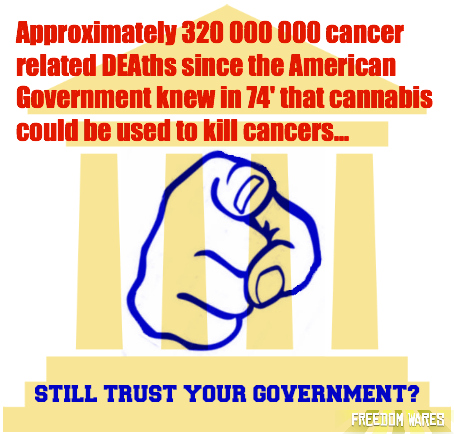 * The global number of deaths from cancer will increase by nearly 80% by 2030
* The global number of deaths from cancer will increase by nearly 80% by 2030
Where the hell is the social conscience?
…and still as we press forward trying to do our best research, a University of Arizona doctor (Suzanne Sisley, photo on right) who pushed for more research into “medical marijuana”loses her job.
“A University of Arizona doctor who pushed for more research into medical marijuana is being released by the school for what she believes are political reasons.
In a letter to Suzanne Sisley, Joe Garcia, interim dean of the College of Medicine, told her that her appointment as assistant director of the Arizona Telemedicine Program will not be renewed effective Sept. 26.
Garcia provided no reason, saying only the action is being taken in accordance with university personnel policy. “In accordance with those policies, my decision is final and is not subject to further administrative review,” he wrote….”
Got Social Conscience?
so·cial con·science
an attitude of sensitivity toward and sense of responsibility regarding injustice and problems in society
http://www.oxforddictionaries.com/definition/english/social-conscience
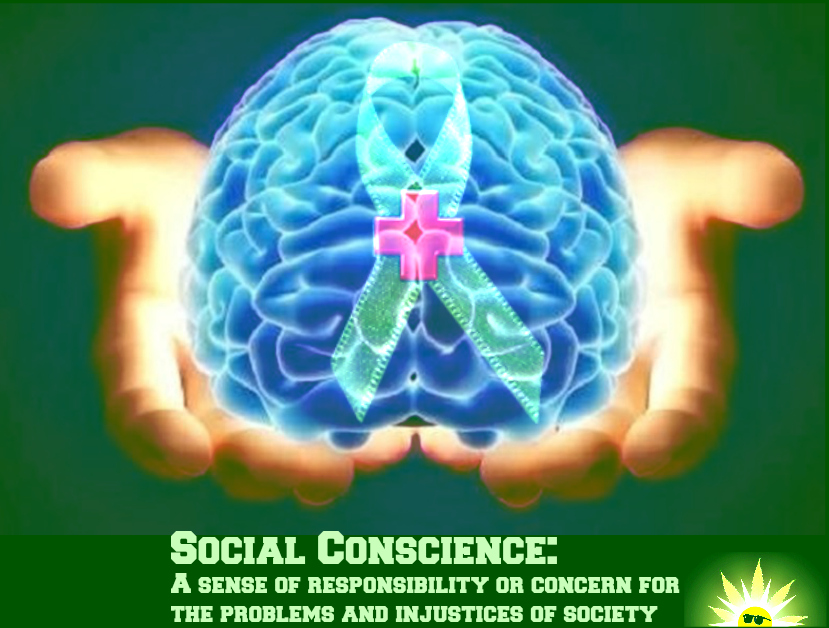
I have been asked recently (again) if I thought cannabis could help with the Ebola virus. With regards to the current Ebola outbreak. The CDC has said “Some who become sick with Ebola are able to recover. We do not yet fully understand why.” Well, I am willing to bet those who successfully beat this virus have a robust EndoCannabinoid System. Flooding one’s Endocannabinoid System with properly extracted phytocannabinoids to me, would be anyones best bet in this case. Phytocannabinoids are the key to better health.
Basic Human Needs…
Wavy Gravy performs his heart-song “Basic Human Needs” on Time4 Hemp.
Wavy Gravy – Basic Human Needs – Time4Hemp
Sing along, then do it again…for meaning…
“Basic Human Needs”
Wouldn’t it be neat if the people that you meet
Had shoes upon their feet
And something good to eat?
Wouldn’t it be fine
If all humankind had shelter?
Basic human needs, basic human deeds
Doing what comes naturally
Down in the garden where no one is apart
Deep down in the garden, the garden of your heart.
And wouldn’t it be grand if we all would lend a hand
So each one could stand on a free piece of land?
And wouldn’t it be thrilling if folks stopped their killing?
And started just tilling the land?
Basic human needs, basic human deeds
Doing what comes naturally
Down in the garden where no one is apart
Deep down in the garden, the garden of your heart.
What a great day it would be if everyone could see
If no one was blind unnecessarily,
Cause it’s hard, yes it’s hard
to be blind—and disabled.
Basic human needs, basic human deeds
Doing what comes naturally
Down in the garden where no one is apart
Deep down in the garden, the garden of your heart.
If folks started sharing, instead of comparing
What each other was wearing
And wouldn’t it be swell
If people didn’t sell their Mother, Earth.
Basic human needs, basic human deeds
Doing what comes naturally
Down in the garden where no one is apart
Deep down in the garden, the garden of your heart.
The tables must turn. Time to bring all those prohibitionists that are truly standing in the way of THeCure up on charges…
Cannabis Prohibition is just another tool of genocide.
https://www.freedomwares.ca/governments-outlawing-cannabis-are-committing-genocide/
In Canada…
“Impeding attempt to save life
262. Every one who
(a) prevents or impedes or attempts to prevent or impede any person who is attempting to save his own life, or
(b) without reasonable cause prevents or impedes or attempts to prevent or impede any person who is attempting to save the life of another person,
is guilty of an indictable offence and liable to imprisonment for a term not exceeding ten years.”
http://laws.justice.gc.ca/eng/acts/C-46/section-262.html
The Truth About The Monkey Study That Says Marijuana Kills Brain Cells
“This is the truth regarding the study that claimed that marijuana kills brain cells. Hint: It turned out to be controlled propaganda..”
Mother Earth and her children now more than ever desperately need Indian Hemp…
Now, here are a few studies that actually support the fact that cannabinoids can actually promote new brain cell growth.
 Activation of Type 1 Cannabinoid Receptor (CB1R) Promotes Neurogenesis in Murine Subventricular Zone Cell Cultures
Activation of Type 1 Cannabinoid Receptor (CB1R) Promotes Neurogenesis in Murine Subventricular Zone Cell Cultures
The endocannabinoid system has been implicated in the modulation of adult neurogenesis. Here, we describe the effect of type 1 cannabinoid receptor (CB1R) activation on self-renewal, proliferation and neuronal differentiation in mouse neonatal subventricular zone (SVZ) stem/progenitor cell cultures. Expression of CB1R was detected in SVZ-derived immature cells (Nestin-positive), neurons and astrocytes. Stimulation of the CB1R by (R)-(+)-Methanandamide (R-m-AEA) increased self-renewal of SVZ cells, as assessed by counting the number of secondary neurospheres and the number of Sox2+/+ cell pairs, an effect blocked by Notch pathway inhibition. Moreover, R-m-AEA treatment for 48 h, increased proliferation as assessed by BrdU incorporation assay, an effect mediated by activation of MAPK-ERK and AKT pathways. Surprisingly, stimulation of CB1R by R-m-AEA also promoted neuronal differentiation (without affecting glial differentiation), at 7 days, as shown by counting the number of NeuN-positive neurons in the cultures. Moreover, by monitoring intracellular calcium concentrations ([Ca2+]i) in single cells following KCl and histamine stimuli, a method that allows the functional evaluation of neuronal differentiation, we observed an increase in neuronal-like cells. This proneurogenic effect was blocked when SVZ cells were co-incubated with R-m-AEA and the CB1R antagonist AM 251, for 7 days, thus indicating that this effect involves CB1R activation. In accordance with an effect on neuronal differentiation and maturation, R-m-AEA also increased neurite growth, as evaluated by quantifying and measuring the number of MAP2-positive processes. Taken together, these results demonstrate that CB1R activation induces proliferation, self-renewal and neuronal differentiation from mouse neonatal SVZ cell cultures.
http://www.plosone.org/article/info%3Adoi/10.1371/journal.pone.0063529
 The anxiolytic effect of cannabidiol on chronically stressed mice depends on hippocampal neurogenesis: involvement of the endocannabinoid system.
The anxiolytic effect of cannabidiol on chronically stressed mice depends on hippocampal neurogenesis: involvement of the endocannabinoid system.
“Cannabidiol (CBD), the main non-psychotomimetic component of the plant Cannabis sativa, exerts therapeutically promising effects on human mental health such as inhibition of psychosis, anxiety and depression…”
“… Here we investigate the potential involvement of hippocampal neurogenesis in the anxiolytic effect of CBD inmice subjected to 14 d chronic unpredictable stress (CUS). Repeated administration of CBD (30 mg/kg i.p., 2 h after each daily stressor) increased hippocampal progenitor proliferation and neurogenesis in wild-type mice…”
 Cannabinoids promote embryonic and adult hippocampus neurogenesis and produce anxiolytic- and antidepressant-like effects
Cannabinoids promote embryonic and adult hippocampus neurogenesis and produce anxiolytic- and antidepressant-like effects
“… Chronic, but not acute, HU210 treatment promoted neurogenesis in the hippocampal dentate gyrus of adult rats and exerted anxiolytic- and antidepressant-like effects. X-irradiation of the hippocampus blocked both the neurogenic and behavioral effects of chronic HU210 treatment, suggesting that chronic HU210 treatment produces anxiolytic- and antidepressant-like effects likely via promotion of hippocampal neurogenesis.”
(Full Text) available in link provided below
http://www.ncbi.nlm.nih.gov/pmc/articles/PMC1253627/
Neurons on cannabinoids: dead or alive?
Preparations from Cannabis sativa (marijuana) have been used for many centuries both medicinally and recreationally. However, the chemical structure of their active components – the cannabinoids – was not elucidated until the early 1960s. Among the ≈60 cannabinoids produced by marijuana, Δ9-tetrahydrocannabinol (THC) is the most relevant one owing to its high potency and abundance (Gaoni & Mechoulam, 1964). Since the early 1990s, it is widely accepted that THC acts in the organism by mimicking endogenous substances – the so-called endocannabinoids (Devane et al., 1992) – that bind to and activate specific cell surface cannabinoid receptors, two of which have been cloned and characterized so far from mammalian tissues: CB1 (Matsuda et al., 1990) and CB2 (Munro et al., 1993). These recent findings have led to a remarkable expansion of basic cannabinoid research as well as to a renaissance in the study of the therapeutic value of cannabinoids.
The CB1 cannabinoid receptor is highly abundant in discrete areas of the brain, and its activation lowers the release of neurotransmitters such as dopamine and GABA, thereby affecting processes such as movement and memory (Piomelli et al., 2000). Besides these well-established neuromodulatory events, cannabinoids may control the survival/death decision of neurons (Guzmán et al., 2002). Thus, cannabinoids have been shown to protect neurons from toxic insults such as excitotoxicity, traumatic injury and ischaemia both in vitro and in vivo (Mechoulam et al., 2002; van der Stelt et al., 2002). This neuroprotective action may rely on different mechanisms, including (i) inhibition of glutamatergic neurotransmission, (ii) antioxidant capacity, (iii) modulation of glial cell function and (iv) control of the microvasculature, and is supported by the observation that the brain overproduces endocannabinoids upon damage (Mechoulam et al., 2002; van der Stelt et al., 2002). In contrast, a few studies have shown that cannabinoids induce apoptosis of cultured neurons (Chan et al., 1998), but the mechanism of this neurotoxic action is largely unknown.
In this issue, Downer et al. (2003) show that THC-induced apoptosis of primary rat cortical neurons relies on the activation of the c-Jun N-terminal kinase (JNK) cascade. The JNK protein kinases participate in the blockade of the cell cycle and the induction of cell death triggered by stress signals such as irradiation, heat shock, osmotic shock and proinflammatory cytokines. As selective JNK inhibitors are not available, Downer et al. (2003) used selective antisense oligonucleotides to target JNK mRNAs and therefore deplete neurons of JNKs. The results of these elegant experiments were rather clear-cut, except perhaps for the relative role of the different JNK isoforms in the apoptotic process.
Cannabinoids may therefore lead to opposite effects on neuron survival/death (Figure 1). It is conceivable that different experimental factors account for this ‘ying-yang’ action, for example: (i) cannabinoid neuroprotection is usually more evident in whole-animal than in cultured-neuron models, which may result from their aforementioned impact on various brain cell types (neurons, glia, vascular endothelium); (ii) cannabinoids may exert dual effects on  neural cell fate depending on signal input (e.g. agonist dose and time of exposure), high inputs usually exerting growth inhibition or death; (iii) endocannabinoids and exogenous cannabinoids may display distinct pharmacological behaviour (e.g. agonistic potency and stability); and (iv) the origin of the neural cell and its stage of differentiation may affect sensitivity to death. Modulation of neural cell fate by cannabinoids is therefore a complex and still obscure issue, and although the bulk of the experimental evidence supports that these compounds protect the brain from damage, the paper by Downer et al. (2003) adds a cautionary note to the field.
neural cell fate depending on signal input (e.g. agonist dose and time of exposure), high inputs usually exerting growth inhibition or death; (iii) endocannabinoids and exogenous cannabinoids may display distinct pharmacological behaviour (e.g. agonistic potency and stability); and (iv) the origin of the neural cell and its stage of differentiation may affect sensitivity to death. Modulation of neural cell fate by cannabinoids is therefore a complex and still obscure issue, and although the bulk of the experimental evidence supports that these compounds protect the brain from damage, the paper by Downer et al. (2003) adds a cautionary note to the field.
https://www.freedomwares.ca/neurons-on-cannabinoids-dead-or-alive/
“What we have in mind is breakfast in bed for 400,000,” ~Wavy Gravy
Though the numbers have increased, the concept remains….
As Wavy said: “We are all feeding each other”
If we as a complete species can truly master this,,,our journey home will be much, much better.
Re: The 60’s: Peace Love & Music….
The generation where most who truly believed in Love and Peace spoke freely of it, and often of those among the highlights were suppressed and/or killed.
Everyone else kinda went the other way…
As time passed on, politics, religion and corporations alike grew into obscene trades that segregate , degrade and distant Humans from each other and the main objective:…
…—->Love. <—–
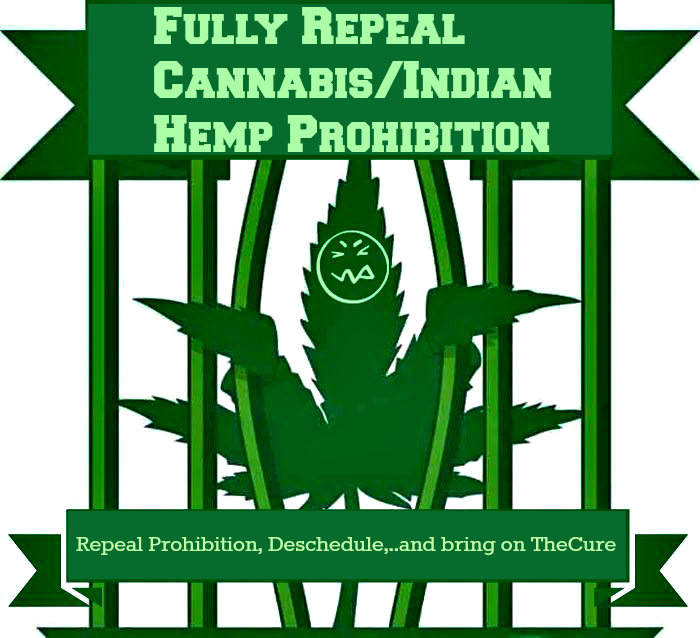 No Prison For Pot!
No Prison For Pot!
No Victim. No crime
Bad Exemption = No Offence (BENO)
…and as Wavy Gravy says:
“…there’s a big difference between Smack, Crack and smokin” flowers…and I’m sick & tired of my friends being dragged off or their houses or cars being confiscated for a joint of marijuana, when ah there are 500,000 DEAths a year from ah alcohol and nicotine,..I mean come on, let’s get real here…”
,,,”…we could do it if we got together/we could do anything….I mean we stopped Vietnam,..we could stop all war, we could feed the hungry…th-there are more pressing issues than this, and more that I devote my life too… “
Wavy Gravy on the Marijuana Debate
Did you know?…
The Killin’ Time Band – Doesn’t Make Sense (Marijuana Prohibition)
“A pro Medicinal Marijuana & Industrial Hemp video by Canada’s “The Killin’ Time Band” The Song “Doesn’t Make Sense” is a plea to world governments to decriminalize & Legalize Medicinal Marijuana & Industrial Hemp. The Hemp plant has over 50,000 uses that could help save our planet, boost our economy & ease the pain of our sick………….. It Doesn’t Make Sense.”
This song appears on the CD “3 Day Weekend” by The Killin’ Time Band
to download this track or CD from itunes please follow this link:
http://itunes.apple.com/us/album/3-da…
Thank you for supporting independent music
www.killintimeband.com
www.facebook.com/
www.youtube.com/killintimeband
www.twitter.com/pailfacebrad
Stop putting bad-aids on Cannabis Prohibition. Any law or statute that is made for Cannabis (“Marihuana”) is just another band-aid. These laws and statutes can still put peaceful cannabis users in jail…
Stop the incarceration of non violent Cannabis users…
Stop ruining & traumatizing decent families…
Fully repeal Cannabis Prohibition and DEschedule….
Anything else just doesn’t make sense….
The cannabinoids found in the Cannabis plant are useful in treating all Human diseases and disorders. Phytocannabinoids are a basic human need,,,the rest is just gravy…
=Peace=
-=One Love=-
refs.
http://www.alternet.org/
http://laws.justice.gc.ca/eng/acts/C-46/section-262.html
http://www.ncbi.nlm.nih.gov/pubmed
Antineoplastic activity of cannabinoids. http://www.ncbi.nlm.nih.gov/pubmed/1159836
…and Thank you Georgia Toons!
RUN FROM THE CURE – Full Version


